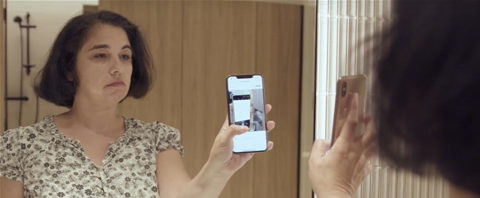Melbourne-based IT solutions provider DiUS has designed an AI-driven, diagnostic tool for insurance technology company Bolttech that assesses the condition of phones and onboards customers onto device protection plans.
DiUS said in a statement that ‘Click-to-Protect’ guides customers to hold their smartphones in front of a mirror and move through a sequence of tests, powered by next-gen machine learning and computer vision technology.
“These images are then analysed by the backend model to ensure the smartphone screen is uncracked.
“With remote servicing options for customers accelerated by COVID-19, Bolttech wanted to continue supporting customers through digital experiences that are just as valuable as face-to-face interactions,” DiUS said.
Bolttech group chief technology officer David Lynch said DiUS achieved Click-to-Protect through harnessing both technical expertise and a deep understanding of the way humans interact with machines.
“DiUS’ proven expertise in AI and learning-based image segmentation analysis helped us rapidly progress from proof of concept to production, to continuous delivery.
“This has been executed with improving model accuracy, accelerated training time and zero downtime in deployment of model updates," Lynch said.
DiUS developed Click-to-Protect for their Singapore-based client in six weeks. The solution leveraged an open source image classification model, FixResNet, which was released by Facebook just a couple of weeks before the project started.
Click-to-Protect was run in PyTorch and hosted on the cloud machine learning platform Amazon SageMaker.
“To get the performance needed, the team trained the model by applying data augmentation and multi-GPU model parallelism," DiUS said.
DiUS said to obtain an image of the smartphone screen for the purchase journey, it built a model using Google’s MobileNetV3 with quantisation-aware training to guide the customer through the experience.
“Because the model needed to be easily downloaded and run in real-time on a customer’s smartphone, a lightweight model was developed, less than 1MB in size.
“This was achieved by utilising quantisation-aware training which leads to models much smaller in size, with minimal impact on the performance.”
DiUS said it was able to use its previous experience using computer vision to develop machine learning models that automate analysis and classification for clients.
“For example, one of our startups, Datarock, is focused on delivering important geological information about a mining site through machine learning algorithms that process digital photos of geophysical measurements from drill core trays.”
DiUS spun off DataRock at the 2019 AWS Summit in Sydney. The SaaS startup uses AWS-based machine learning models, which DiUS designed during its collaboration with data science consultancy Solve Geosolutions for clients in the mining sector.
DiUS became the first AWS partner to receive Applied AI Competency in the Asia Pacific and Japan region today.




.jpg&h=142&w=230&c=1&s=1)
_(21).jpg&h=142&w=230&c=1&s=1)
.png&h=142&w=230&c=1&s=1)





.jpg&w=100&c=1&s=0)
_(8).jpg&w=100&c=1&s=0)










